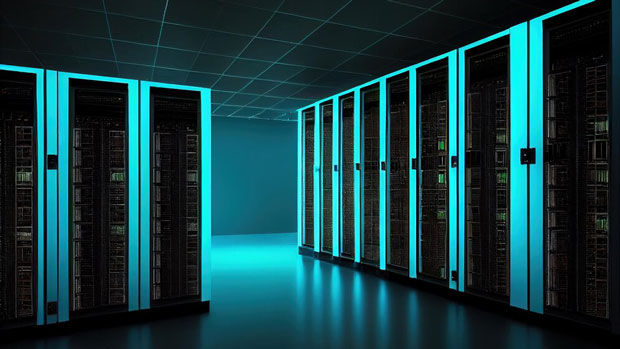datacenter proxies are a widely used tool in the digital world, providing anonymity and enabling users to perform tasks like web scraping, data extraction, and content access. However, when it comes to dynamic proxy update frequency, there are several limitations that users need to consider. These limitations can impact performance, reliability, and overall efficiency. In this article, we will discuss the key limitations of datacenter proxies, particularly when used for dynamic tasks, and how these limitations can affect various use cases. Introduction to Datacenter ProxiesDatacenter proxies are commonly employed in tasks requiring a high level of anonymity and scalability, such as web scraping, market research, and bypassing geo-restrictions. Unlike residential proxies, which route traffic through residential IPs, datacenter proxies route traffic through servers in a data center. This makes them faster and cheaper than residential proxies but also leads to certain restrictions, especially concerning the dynamic nature of proxy update frequency.Understanding Dynamic Proxy Update FrequencyDynamic proxy update frequency refers to how often a proxy server’s IP address changes while performing tasks. Frequent updates can be crucial for tasks like web scraping and bypassing IP-based restrictions. For instance, when scraping data from websites that implement anti-bot measures, changing the proxy ip at frequent intervals can help avoid detection. However, the update frequency of a proxy service depends on various factors, and not all datacenter proxies are designed to handle rapid or dynamic IP switching.Key Limitations of Datacenter Proxies in Dynamic Update FrequencyWhile datacenter proxies are reliable in many cases, they come with certain limitations when it comes to updating proxy ips dynamically. These limitations include:1. Rate of IP RotationOne of the primary limitations is the rate at which the IPs are rotated. Some datacenter proxy providers offer automatic IP rotation, but the frequency of rotation may not be as fast as needed for high-volume tasks. If a high rotation rate is required to ensure anonymity or avoid detection, this can limit the effectiveness of the proxy, as slower rotations can expose patterns in traffic behavior. This may result in websites blocking or flagging the proxy as suspicious.2. Limited Pool of IPsDatacenter proxies often rely on a fixed pool of IPs, and once a user exhausts this pool, the provider may not be able to offer new IPs as quickly as required. This limitation is especially true for low-cost providers. In high-demand situations, when users need to rotate IPs rapidly, a small IP pool can be a significant bottleneck. Inadequate IP pools can lead to delays in updating proxy IPs, which impacts the efficiency of tasks like web scraping, account management, and more.3. Detection of Proxy UsageWebsites and services that implement anti-bot measures can quickly detect datacenter proxies. Dynamic proxy updates can help to some extent, but they are not a foolproof method for avoiding detection. The more frequently the IP address changes, the more likely it is that the website will detect irregular traffic patterns or inconsistent behavior. This detection can lead to temporary or permanent bans. Therefore, while dynamic updates can reduce detection, they are not always sufficient.4. Cost of Rapid Proxy UpdateMany datacenter proxy providers charge more for services that support rapid updates or offer rotating IPs on demand. As a result, users who need frequent IP changes may face higher costs. While dynamic proxies can significantly improve performance, the associated costs can make them less appealing for small businesses or users with tight budgets. This cost barrier limits the accessibility and practicality of dynamic proxy solutions for a wide range of applications.5. Quality of Service and StabilityAnother limitation of datacenter proxies is the quality of service. Frequent IP updates may reduce the overall stability of the connection. Each time the proxy changes, there may be a slight interruption in service, which can cause delays or errors in tasks such as web scraping. This can be particularly problematic for tasks requiring high reliability, such as market research or data collection for decision-making. Providers who offer higher-frequency updates may have lower stability in these situations, reducing the effectiveness of the proxy.6. Geographic LimitationsWhile some datacenter proxies offer global IP options, others are limited to specific regions. If a user needs to perform tasks requiring proxies from a particular country or region, dynamic updates may be constrained by the available geographic options. Even if rapid proxy updates are available, the region-specific limitations can hinder the flexibility of datacenter proxies in some cases, particularly for international operations.Strategies to Mitigate LimitationsTo address the limitations of datacenter proxies with respect to dynamic proxy update frequency, users can employ several strategies:1. Use Multiple Proxy ProvidersUsing a combination of different proxy providers can help mitigate issues related to IP pool size, rotation rate, and detection. By diversifying proxy sources, users can access a larger pool of IPs and benefit from varying update frequencies, enhancing reliability and reducing detection risks.2. Employ Proxy Rotation StrategiesFor users who need high-frequency IP updates, rotating proxies manually or setting specific intervals for IP change can be a more effective solution. Additionally, some advanced tools allow users to control rotation based on the number of requests or time intervals, making it easier to stay under the radar of anti-bot measures.3. Combine Residential and Datacenter ProxiesTo overcome the detection issues inherent in datacenter proxies, some users combine them with residential proxies. Residential proxies are less likely to be detected due to their genuine nature. Although they tend to be more expensive than datacenter proxies, they provide an extra layer of protection and stability when used alongside dynamic datacenter proxy updates.4. Choose High-Quality ProvidersOpting for higher-quality datacenter proxy providers can minimize the impact of limitations. Premium providers often offer more extensive IP pools, better rotation rates, and improved support for high-frequency updates. While they come at a higher price point, they are more reliable and effective for demanding use cases.Datacenter proxies are an essential tool for various tasks, but they have limitations when it comes to dynamic proxy update frequency. Understanding these limitations is key to optimizing proxy performance for tasks such as web scraping, account management, and bypassing geo-restrictions. By selecting the right provider, using multiple proxies, and employing intelligent proxy management strategies, users can mitigate these limitations and achieve optimal results.
Sep 24, 2025



































































